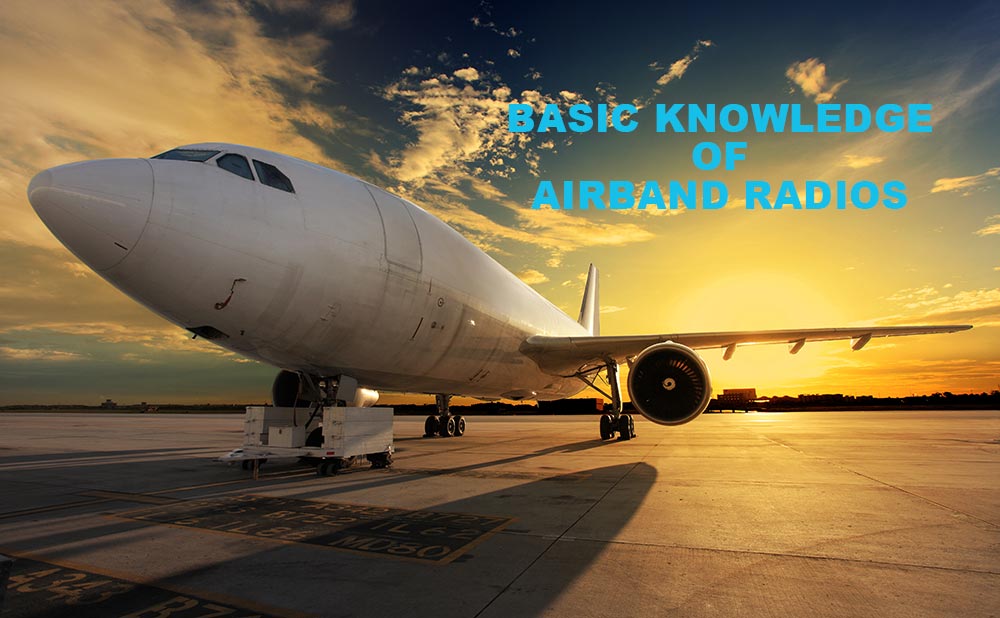Basic knowledge of Airband Radios

Basic knowledge of Airband Radios
Aeronautical band or avionics radios are used in aviation for navigation and two-way communications. If you already own an airplane, you probably already know how important aviation band radio is. This article will tell you the relevant vague and basic knowledge, hoping to help you understand.
What is the airband frequency band?
Aeronautical band radio uses VHF frequencies in the 108 MHz - 137 MHz range. VHF aviation band channels are different from those used by land-based radio and are allocated exclusively by the FCC for avionics equipment. In addition to VHF channels, transoceanic aircraft may also use HF frequencies. For now, we'll just focus on VHF.
VHF provides optimal coverage in open spaces with clear line of sight. Because air-band radio transmissions occur primarily in the air or from high altitudes to the ground, the range is typically much greater than land-based radio. This means that a typical 5-watt handheld aviation band radio in flight will transmit farther than a typical 5-watt UHF or VHF ground-to-ground communications radio. Panel-mounted NAV/COM aviation band radios around 8 watts can go even further.
Aeronautical band radio types
There are three basic types of aviation band radios. The design of a handheld aviation band radio is much the same as that of a typical handheld portable land mobile two-way radio. Panel mount aviation band radios are typically installed in the cockpit of an airplane or other aircraft, like a typical mobile radio in a vehicle. A ground station refers to an aviation band radio that operates on the ground, whether mounted on a vehicle or placed on a table.
Airband channel?
Aviation band radios are divided into COM for voice communications and NAV for navigation. Although GPS is now widely used, the NAV channel is still used for VOR (VHF Omnidirectional Radio Range). VOR is a short-range radio navigation system for aircraft that enables aircraft with receiving units to determine their position and stay on course by receiving radio signals transmitted by a network of fixed ground-based radio beacons. There are approximately 3,000 VOR stations worldwide.
The aviation frequency band is divided into COM and NAV channels. COM channels use the higher end of the frequency band and are programmed to frequencies specifically for voice communications. In the United States, the frequencies allocated for AM voice communications are between 118.000 MHz and 136.975 MHz. The NAV channel uses the lower end of the frequency band and allocates frequencies from 108.000 MHz to 117.95 MHz for navigation aids. These frequencies are divided into 200 narrowband channels of 50 kHz.
Very High Frequency Omnidirectional Range (VOR) is a navigation system. It is a short-range radio beacon system developed in the United States in 1937 to help pilots determine position and maintain course. It has now become the global standard for aviation navigation, with approximately 3000 VOR stations worldwide.
In addition to the COM and NAV channels, VHF aviation band radios typically support the NOAA Marine Weather Channel and NOAA Weather Alerts. The aeronautical band also includes the emergency communications frequency at 121.5 MHz with a bandwidth of 100 kHz. This frequency is called International Air Disaster (IAD).
About the license
The license depends on how and where you use the radio. If you are using fixed or permanently installed equipment in an aircraft, an aircraft radio license is required. If you only use VHF portable radio equipment on more than one aircraft, you may apply for a transferable license. If you have a portable radio that is intended for use only in one aircraft, it should be licensed as an aircraft radio. If you use radio equipment to talk to aircraft from the ground, you will need to apply for an aviation ground station license. You must also obtain Air Navigation Order approval, and this application form doubles as the approval application.
From January 1, 2018 you must have an 8.33 kHz compatible device From January 1, 2018 Effective January 1, all aircraft operating in airspace required to carry radios must be equipped with 8.33 kHz compliant equipment.
Summarize
Airborne or avionics radios are used primarily by pilots and air traffic control as a means of two-way communication and navigation. Aviation band radios use VHF frequencies and channels that are different from those used on the ground because they are reserved specifically for use in the avionics environment. Typically between 108 and 137 MHz. At the same time, aeronautical radio messages must be limited to messages related to flight safety or flight normality. Public correspondence and messages related to airline/company business communications and passenger services/conveniences are not permitted.






